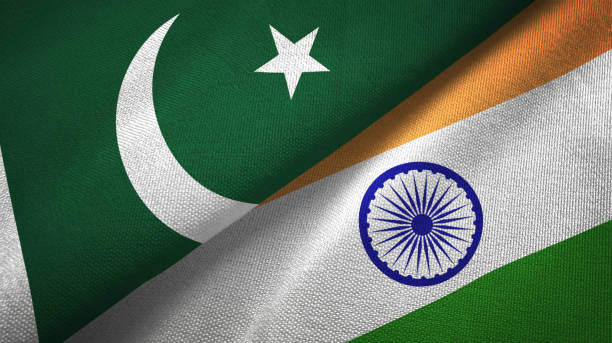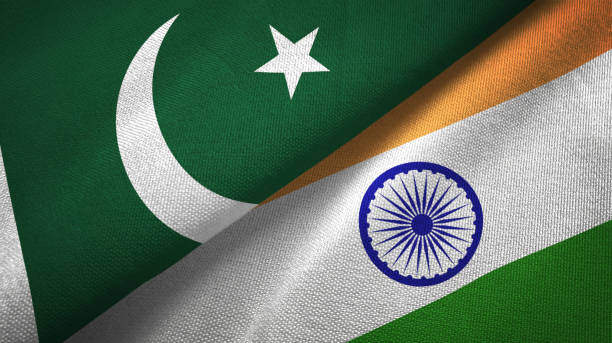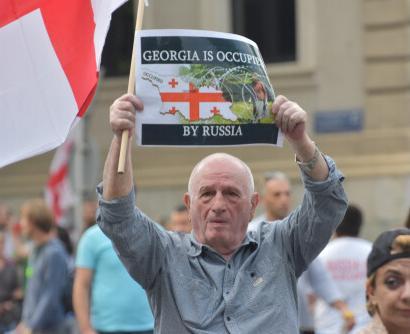Abstract: The two bickering neighbours, India and Pakistan, have fought vehemently over the disputed Kashmir territory. The paper traces the claims of both parties and evaluates how both have fought over the territory in the approximate 70 years since the independence of both states. It analyses the recent development where the Indian Government revoked Article 370 and 35A from the Indian Constitution that directly diminishes Pakistan’s claim over the territory. It also sheds light on the human rights atrocities carried out in the Indian-held Kashmir by Indian forces over the years and explores why India accuses Pakistan of engaging in state-sponsored terrorism.
Bottom-line up-front: The relationship between the two nuclear states has been at its lowest ebb for years. The recent events have raised alarms of an escalating conflict that can put the entire region’s security in jeopardy.
Problem Statement: How to understand the rivalry and tense relationship between India and Pakistan over the disputed territory of Kashmir and its impact on the security of the region?
So what?: If both countries continue to quarrel over the disputed territory of Kashmir, human rights violations in the said state are likely to increase along with a threat to dwindling security in both India and Pakistan. If the conflict escalates, there is an imminent threat of a nuclear standoff between the two countries. Therefore, it is necessary to understand the volatility of the situation and urge the international community to intervene and find a peaceful resolution to the conflict.

Source: www.iStockPhoto.com /Oleksii Liskonih
In 2019, India carried out airstrikes on the militant training camps in Pakistan in response to the increased militant activity in Kashmir.[1] This revived Pakistan’s fear of an escalatory clash with India.[2] India further strengthened its control over the state by the unilateral revocation of Article 370 and 35A from the Indian Constitution and putting the state of Kashmir in lockdown for nearly two years.[3] Under this legally contested move, curfew was imposed on citizens, internet and other communication network services were suspended along with a massive crackdown on political parties, human rights activists and civil society actors, thus limiting freedom, liberty and rights in the region.[4] Further, the clashes between the Indian Army and citizens of Kashmir led to deaths, illegal detention and arrests among other gross human rights violations.[5] Article 370 of the Indian Constitution granted Jammu and Kashmir an independent, autonomous status sans defence, communication, and external affairs controlled by the central Indian Government. Article 35A barred any other Indian resident from acquiring property, employment or conducting business in Kashmir. The revocation of these articles stripped Kashmir of its autonomous status and allowed majority Hindu settlement from across India which has been deduced as an attempt to change the demographics, thus dispelling Pakistan’s claim over the ‘Muslim-majority’ state.[6]
Article 370 of the Indian Constitution granted Jammu and Kashmir an independent, autonomous status sans defence, communication, and external affairs controlled by the central Indian Government.
The disputed territory of Kashmir has been a source of contention between India and Pakistan since they declared independence from the British in 1947.[7] Pakistan claims that according to the partition plan that called for a division of the state of India along religious communal lines, the Muslim-majority state of Kashmir should rightfully be a part of Pakistan.[8] India contends that the princely state of Kashmir voted to join India; therefore, it is rightfully a part of India.[9] Both countries have gone to three wars over the disputed territory and have had a strained relationship for the better part of the 70 years since independence.
Pakistan sees India’s ambitious aim to weaken Pakistan to the point of collapse, which would eventually force Pakistan to rejoin India, thus reunifying the subcontinent as an existential threat.[10] Pakistan’s insecurities were amplified when in 1971, India seized the opportunity to support the Bengal uprising during the civil war in Pakistan’s Eastern wing, which eventually led to the independence of Bangladesh and Pakistan losing its ‘eastern wing’.[11] When both countries became nuclear powers in 1998, a direct confrontation between India and Pakistan became unthinkable due to the risk of nuclear escalation.[12] Pakistan has been aware of its inability to counter India’s economic and military might in a direct confrontation after suffering four debilitating defeats in wars with India.[13] Therefore, in 1987, it resorted to adopting proxy warfare as a cheaper strategic tool for Pakistan through which it could counter Indian aggression and pursue its claim over the Kashmir territory without also risking a nuclear standoff.
Pakistan hoped that constant proxy warfare would keep India embroiled in a financially and militarily draining conflict, thus diminishing chances of aggression towards Pakistan.[14] Pakistan ultimately hoped it would be easier to win a diplomatic and strategic advantage in its relations with a relatively weaker India.[15] Pakistan also ambitiously presumed that if the internal discord would make Kashmir ungovernable by India, it could potentially switch the government of Kashmir in Pakistan’s favour.[16]
Pakistan supported the two prominent militant groups ¾ Lashkar-e-Taiba (LeT) and Jaish-e-Muhammad (JeM)¾ trained by its Inter-Services Intelligence (ISI), to fight in the Soviet-Afghan war.[17] By propagating that it is supporting the ‘freedom fighters’ in Kashmir in their fight against India, Pakistan gathered local support, especially the use of madrassah’s (religious educational institutes) as recruitment centres and training camps for the militant groups.[18] However, the militant groups were unsuccessful in their attempt to liberate Kashmir but were able to attire India financially and militarily in Kashmir.[19] Despite overwhelming evidence that ISI officials provided funding, training, and support, Pakistan continued to deny the Indian allegations that these groups were Pakistani funded.[20] This resulted in strained diplomatic relations between the two countries and diminished prospects of a resolution of the Kashmir dispute through diplomatic channels.[21] When the militant groups shifted allegiance to Al Qaeda, particularly after 9/11 and during the War on Terror, Pakistan saw a ‘mushroom growth’ of external militant groups on its soil which deteriorated its own security. With the infiltration of the external militant groups against the backdrop of 9/11 attacks, Pakistan supported militant groups also expanded their anti-Indian agenda to an anti-Western agenda, thus escaping from the Pakistani state’s control.[22]
When the militant groups shifted allegiance to Al Qaeda, particularly after 9/11 and during the War on Terror, Pakistan saw a ‘mushroom growth’ of external militant groups on its soil which deteriorated its own security.
With mounting pressure from the United States, who stopped short of declaring its ally a state sponsor of terrorism, Pakistan officially announced it would curtail the militant groups operating within its territory but never staunchly followed through.[23] Pakistan stopped short of completely disassociating and abandoning its militant allies particularly because it continued to use them to create discord in Indian Kashmir. Pakistan’s unwavering support for the militants kept its diplomatic and political relations with India strained and the international Kashmir dispute violently contested. In order to quell dissent and keep the security situation from worsening, Indian forces have often resorted to extreme measures that have given a rise in human rights abuses in Indian-held Kashmir, as also reported extensively by reputed international organisations over the years. These have ranged from extrajudicial killings, imprisoning political leadership, rape, indiscriminate attacks, torture, and murder of civilians, kidnapping and deliberate attacks on journalists, human rights activists, and health care workers in the region.[24] The nearly two-year lockdown exacerbated the situation. Pakistan, particularly under the premiership of PM Imran Khan has been raising concerns on multiple international forums regarding the deteriorating human rights situation in Kashmir.
Pakistan’s unwavering support for the militants kept its diplomatic and political relations with India strained and the international Kashmir dispute violently contested.
The Kashmir dispute is not a stand-alone border conflict between two states; instead, it is an extension of a hostile relationship between two neighbors with a shared history. Pakistan’s pursuance of strategic objectives through proxy means was a tacit acknowledgement of how it could not afford a direct confrontation with the relatively mightier India. However, as the militant groups escaped dependency on Pakistan and became autonomous, the seemingly cheaper alternative has proved extremely costly and counterproductive for Pakistan. Pakistan has paid the price in blood, treasure, and sacrifice of internal stability and security due to terrorism. It has also kept both states embroiled in the quagmire in Kashmir, resulting in growing instability in the subcontinent. There seems to be no immediate end to the conflict of Kashmir and the wider threat of terrorism in the region. The ongoing human rights atrocities in Kashmir should bring in international actors to remedy the situation. Though, until the two nuclear states find a middle ground to co-exist, the volatility of the situation will only increase.
Pakistan has paid the price in blood, treasure, and sacrifice of internal stability and security due to terrorism. It has also kept both states embroiled in the quagmire in Kashmir, resulting in growing instability in the subcontinent.
Mariam Qureshi is an MA International Affairs student concentrating in Espionage and Surveillance at the Defence Studies Department at King’s College London. She received her BA (Honours) in Political Science from Kinnaird College for Women, Lahore, Pakistan. She is also an Editor at the International Team for the Study of Security (ITSS) Verona.
[1] Dalbir Ahlawat. & Raymond Izarali, “India’s Revocation of Article 370: Security Dilemmas and Options for Pakistan,” The Round Table: The Commonwealth Journal of International Affairs, 109(6), 667.
[2] Idem.
[3] Ibid, 663.
[4] “Kashmir: A Year of Lockdown and lost Autonomy”, DW, August 2020, https://www.dw.com/en/kashmir-a-year-of-lockdown-and-lost-autonomy/a-54437369.
[5] Idem.
[6] Ahlawat and Izarali, “India’s Revocation,” 663.
[7] Suvir Kaul, “Indian Empire (and the Case of Kashmir),” Economic and Political Weekly, 46(13), 2011, 71.
[8] Hilary Synnott, “Transforming Pakistan,” (Abingdon: Routledge for the International Institute for Strategic Studies, 2009), Chapter 4.
[9] Idem.
[10] Owen Bennett Jones, “Pakistan: Eye of the Storm,” (New Haven: Yale University Press, 2009), xviiii.
[11] Shuja Nawaz, “Crossed Swords: Pakistan, its Army, and the Wars within,” (Karachi: Oxford University Press, 2008), 165.
[12] Jones,“Pakistan”, 194.
[13] Thazha Varkey Paul, “The Warrior State: Pakistan in the Contemporary World,” (Oxford: Oxford University Press, 2014), 5.
[14] Kaul, “Indian Empire,” 66.
[15] Idem.
[16] Jones, “Pakistan”, xviiii.
[17] Idem.
[18] Ibid, 401.
[19] Ibid, 10.
[20] Paul Kapur, “Jihad as Grand Strategy,” (Oxford: Oxford University Press 2016), 91.
[21] Idem.
[22] Rohan Gunaratna, and Khuram Iqbal, “Pakistan: Terrorism Ground Zero,” (London: Reaktion Books, 2011), 146.
[23] Kapur, “Jihad,” 96.
[24] Human Rights Watch, https://www.hrw.org/sites/default/files/reports/INDIA937.PDF.






